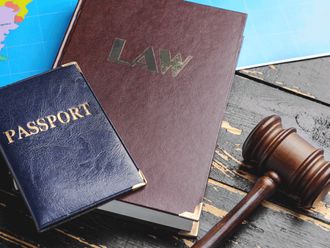Al Ain: Seismologists have rated as severe the Iranian earthquake, saying it was shallow and a potentially hazardous phenomenon. Shallow earthquakes, not deep in the earth, can only be devastating at and around the epicentre.
There were, however, conflicting reports about the earthquake. The UAE’s National Centre of Meteorology and Seismology (NCMS) said it was a 6.2 magnitude earthquake that occurred some 24km deep inside the earth. The US Geological Survey (USGS) and the European-Mediterranean Geological Centre, however measured it 6.3 with a depth of just 10km.
Iranian official sources said that it was a powerful 6.1 magnitude earthquake that struck at a depth of 12km, near the Gulf port city of Bushehr, killing at least three people. The epicentre was in the Kaki area, nearly 90km southeast of Bushehr, home to Iran’s only nuclear power plant. There was no immediate word on any damage to the nuclear plant from the quake.
The Iranian seismological centre reported some six aftershocks. The strongest was of 5.3 magnitude. Speaking to the ISNA news agency, the head of Iran’s Red Crescent rescue corps, Mahmoud Mozafar, said there was a possibility of “damage,” considering the rural nature of the stricken area, home to some 12,000 inhabitants.
The NCMS has advised people in UAE to calm down, saying that an earthquake of this magnitude occurring far away only gives the feeling of after effects.
UAE geologists said the earthquakes had sent minor jolts to the emirates as per the available details. “Earthquakes are not unusual since the earth is dynamic and thousands of earthquakes have been taking place all over the world,” said Abdullah Saleh, a UAE geologist.
Most of the tremors felt in the UAE originate in Iran due to the close proximity. The UAE has experienced shockwaves from earthquakes in neighbouring countries many times since 1999. The emirates, however, also have three local fault zones that are located near Dibba, between Bidyah and Jebel Salhal, and Wadi Ham.
Iran sits astride several major fault lines and is prone to frequent earthquakes, some of which have been devastating. Seismologists said Iran’s Kerman region is a seismologically active area and earthquakes of low and moderate intensity are a routine. This region is located on a major fault line and seismic activity sometimes affects neighbouring regions.
Twin quakes, one measuring 6.2 and the other 6.0, struck north-western Iran in August last year, killing more than 300 people and injuring 3,000. In December 2010, a large quake struck the southern city of Bam. It killed 31,000 people — about a quarter of the city’s population — and destroyed its ancient mud-built citadel.










